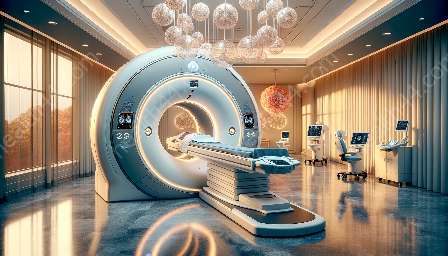Dental imaging devices are essential tools used in modern dentistry to diagnose and treat various oral conditions. These devices play a crucial role in providing accurate and detailed images of the teeth, jaws, and surrounding structures, aiding dentists in accurate diagnosis and treatment planning. In this comprehensive guide, we will delve into the world of dental imaging devices, their types, functions, and how they compare to medical imaging devices and other medical devices & equipment.
The Role of Dental Imaging Devices
Dental imaging devices, also known as dental radiography or dental x-ray machines, are used to capture detailed images of the oral and maxillofacial areas. These devices are commonly employed in routine dental examinations, as well as for diagnosing and planning the treatment of various dental conditions such as cavities, gum disease, impacted teeth, and oral infections.
Furthermore, dental imaging devices are indispensable in oral surgery, orthodontics, and endodontics, enabling dentists and specialists to visualize the internal structures of the teeth and surrounding tissues with precision. These devices aid in identifying abnormalities, assessing bone density, and evaluating the overall oral health of patients.
Types of Dental Imaging Devices
There are several types of dental imaging devices, each designed for specific diagnostic purposes. Intraoral x-ray machines are one of the most commonly used devices, providing detailed images of individual teeth and supporting structures. Panoramic x-ray machines capture a single, flat image of the entire mouth, including the teeth, upper and lower jaws, and surrounding tissues.
Cone-beam computed tomography (CBCT) scanners are advanced imaging devices that produce 3D images of the oral and maxillofacial region, offering unparalleled visualization of dental anatomy and pathology. These devices are particularly valuable in complex dental procedures, dental implant placement, and orthognathic surgery.
Another type of dental imaging device is the digital dental sensor, which replaces traditional film-based x-rays with digital sensors that capture and display images on a computer screen in real-time. This technology reduces radiation exposure, eliminates the need for chemical processing, and allows for easy storage and retrieval of patient images.
Comparison with Medical Imaging Devices
While dental imaging devices focus on capturing images of the oral and maxillofacial regions, medical imaging devices encompass a broader spectrum of diagnostic tools used in various medical specialties. Medical imaging devices such as X-ray machines, computed tomography (CT) scanners, magnetic resonance imaging (MRI) machines, and ultrasound equipment are employed to visualize internal organs, tissues, and skeletal structures throughout the body.
Despite their differences in application, dental imaging devices share common principles with medical imaging devices, including the utilization of ionizing radiation (in the case of x-ray machines and CT scanners) or non-ionizing radiation (in the case of MRI and ultrasound) to create detailed images for diagnosis, treatment planning, and monitoring of patients' health.
Both dental and medical imaging devices prioritize patient safety and diagnostic accuracy, adhering to strict standards and protocols to minimize radiation exposure and ensure high-quality imaging. Additionally, advancements in digital technology have led to the integration of digital imaging systems in both dental and medical practices, enhancing the efficiency and precision of diagnostic imaging.
Interconnection with Medical Devices & Equipment
In the realm of medical devices & equipment, dental imaging devices form an essential component of the broader ecosystem of diagnostic and imaging technologies. As part of the interconnected network of medical and dental specialties, these devices contribute to the comprehensive assessment and management of patients' health and well-being.
Dental imaging devices interact with other medical devices and equipment in various clinical scenarios, such as pre-operative assessments, interdisciplinary treatment planning, and collaborative care for patients with complex medical and dental conditions. Through interdisciplinary collaboration, healthcare professionals leverage the capabilities of different imaging modalities and medical devices to deliver integrated and holistic patient care.
Conclusion
In conclusion, dental imaging devices play a pivotal role in modern dentistry, empowering dental professionals to visualize and assess oral health with precision and accuracy. As integral components of dental practices, these devices contribute to the seamless integration of dental and medical imaging technologies, fostering collaborative patient care and comprehensive treatment outcomes.


